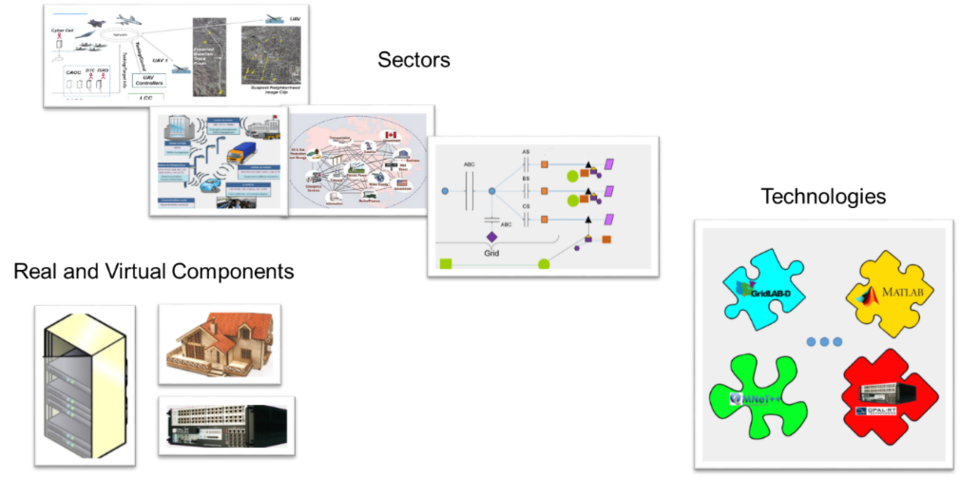UCEF: Universal CPS Environment for Federation

The UCEF logo shows the four letters—“U”, “C”, “E”, and “F”. Each of the four letters is contained in a colored box, and each of the colored boxes is a different shape and color. The boxes containing “C”, “E”, and “F” are connected to each other by a straight line. The box containing “U” is connected to the box containing “C” by a dotted line.
Cyber-physical systems (CPS) are highly interconnected systems that will provide new functionalities to improve quality of life and enable technological advances in critical areas. Among these critical areas are personalized health care, emergency response, traffic flow management, smart manufacturing, defense and homeland security, and energy supply and use. CPS and related systems (including the Internet of Things (IoT) and the Industrial Internet (IIoT)) offer a potential economic impact of $4 trillion to $11 trillion a year in 2025.
CPS contain co-engineered, interacting networks of physical and computational components from many different technology domains. Each of these domains (e.g., smart grid, smart cities, smart manufacturing, smart transportation, smart home, etc.) has technologies and simulation engines tailored to its individual needs and experiences.
CPS experimentation requires the integration of these heterogeneous, domain-specific tools into a common co-simulation platform. The Universal CPS Environment for Federation (UCEF) is an open-source tool set that enables this integration, thereby addressing various challenges and concerns that currently limit CPS experimentation and research.
(For more details on these challenges and concerns, see Why Do We Need UCEF?)
UCEF is a tool set for designing and implementing federated, collaborative, and interactive experiments with cyber-physical systems (CPS). UCEF has been developed by NIST’s Smart Grid and Cyber-Physical Systems Program and its partner, the Institute for Software Integrated Systems at Vanderbilt University. This tool suite integrates the leading simulation engines and hardware-in-the-loop with a distributed modeling and simulation architecture defined by a standardized communications protocol, the IEEE 1516 High Level Architecture (HLA) standard. (For more details, see How Does UCEF Work? and What Are UCEF’s Key Features?)
UCEF provides the ability to federate across sectors, technologies, and real and virtual components.

UCEF facilitates a wide range of CPS simulations and experiments. For example, it supports research in the robustness of individual CPS models and their scale-up to large infrastructures. UCEF also accelerates the development of standards and best practices for interoperability and cybersecurity.
UCEF can be used by researchers working in a wide variety of organizations. With the UCEF project, NIST is leading and encouraging the formation of a CPS testbed community of practice that includes testbed users and developers in the industrial, academic, and non-profit/governmental sectors.
The first implementation of UCEF is in the NIST CPS testbed, physically located on the NIST campus in Gaithersburg, Maryland. Because UCEF makes it possible to include federates from other locations, other researchers and organizations from around the country and world will eventually be involved with experiments and simulations carried out in the NIST CPS testbed. Similarly, an organization with a CPS-related testbed at its own facility may want to use UCEF to allow the incorporation of federates from other locations.
A note to less technical readers: Here’s an analogy that might be useful.
A note to more technical readers: The information on this webpage is designed to provide a high-level overview of UCEF. If you would like to know more technical details, download the UCEF tool set, become a part of the CPS testbed community, and learn how to work with UCEF, you will want to visit the UCEF Collaborative Site.

